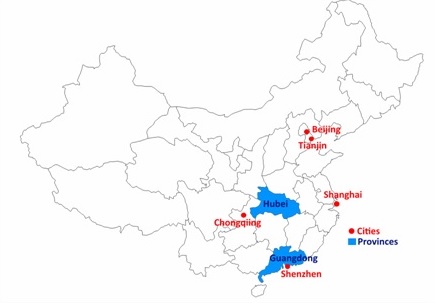It is 10 years since the European Emissions Trading Scheme (EU-ETS) launched. Now China is working on its own equivalent scheme, with a huge potential impact. But China’s businesses – key to its success or failure – haven’t fully embraced the scheme. In a new paper in Climate Policy, incoming STEPS member Wei Shen examines why that is, and what China is doing to address the problem.
In the past decade, the Chinese government exhibited tremendous determination to establish a nationwide emissions trading scheme (ETS), which is believed by many policy makers in Beijing as a cornerstone policy tool to curb its soaring emissions in a cost-effective manner. As the world’s largest emitter of greenhouse gases, the country’s strategy to tackle climate change would exert a profound impact not only at domestic level but on the global scale. Therefore how market based instruments (carbon trading or carbon tax) are designed and implemented has attracted significant policy, market and academic attention since ETS showed up on the Chinese political agenda.
The first pilot ETS programme was formally launched in Shenzhen on 18 June 2013, with the remaining six following closely on its heels. Today, these pilot programmes cover over 1.5 billion tonnes of emissions in the pilot areas, which in theory makes them, collectively, the largest carbon market in the world. Chinese central government officers have expressed their eagerness to establish a nationwide ETS based on the current piloting experiments as early as in 2016. The political ambition rides high, but practical challenges remain daunting.

Image: China’s 7 pilot ETS programmes
At the outset, the market liquidity of all the pilot programmes is very low compared to matured carbon markets such as the EU-ETS (European Union Emissions Trading Scheme). In China, only 21.38 million tons of CO2 equivalent are being traded up to 2015, and the total market values of these piloting programs staggers around 130 million Euros. In comparison, the market value of EU-ETS reached 8 billion USD within the first year of its formal launch in 2005.
Barriers for businesses
There are many reasons for the apathy of Chinese enterprises towards the ETS. First, they are generally not ‘climate-conscious’; most believe that climate change is not caused by them but Western companies, so it is not their obligation to address it. Many companies also complain that they lack the essential know-how for commodity trading, since most commodity prices in China have been fixed by the government for decades. Besides, there is an appalling shortage of expertise on corporate carbon asset management. Finally, for some companies, lowering their carbon footprint would mean a tremendous economic loss that could not possibly be redeemed by carbon pricing. For example, it is very difficult for thermal power facilities to further cut their emissions in a cost-effective manner, as most of their peripheral abatement options are already exhausted. But advanced coal combustion technologies are often too expensive to be compensated for by the carbon market alone.
Implementation challenges
Policy makers face tremendous challenges too. The greatest of these is transparency. As yet, the performance of capped enterprises in most piloting schemes have not been revealed to the public or the media, which causes many concerns regarding the governance quality of these pilot programmes. The emissions monitoring, reporting and validating (MRV) system is also chaotic in some industries or localities, where self-reporting is the dominant method to collect emission data. Newly-appointed validators are either inexperienced or loosely regulated, which makes allowance calculation or allocation an extremely difficult task. Lastly, the legal and regulatory framework is far from complete, as the current trading system is based on a regulatory document of just 5,000 words issued by the National Development & Reform Commission (NDRC) in 2013, plus a number of local policies, which seriously weaken the legitimacy and enforceability of the schemes, particularly with regard to non-compliance.
Steps forward
The good news is that various efforts have been pulled together to address these challenges. Secondary markets based on financial derivatives or options are being designed by many Chinese researchers, with the aim of enhancing liquidity. A comprehensive ‘climate law’ is now under construction, yet it is very unlikely that it can be passed before the launch of a national ETS in 2016. China’s 13th Five Year Plan (2016 – 2021) is now ready to launch, and all of the country’s government institutions are busy preparing for the final version for their next five years of operation. The ETS appears to be the flagship policy of Chinese climate officers, and it is always a good indication of the Chinese government’s efforts to tackle climate change at international negotiations. Whether or not it flourishes, however, is in the hands of business enterprises. One cannot create a market without market enthusiasm; on its own, political enthusiasm is simply not enough.
Read the paper
Read Wei Shen’s paper in Climate Policy: Chinese business at the dawn of its domestic emissions trading scheme: incentives and barriers to participation in carbon trading, Climate Policy 15:3 (free access)